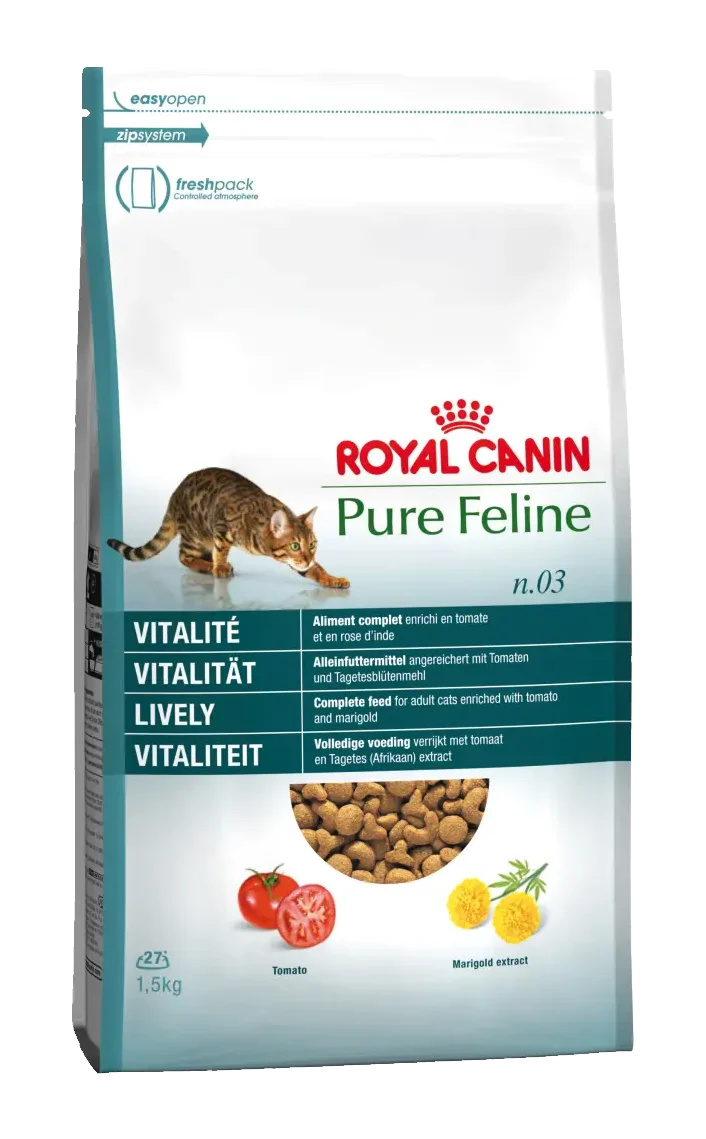Royal Canin – Pure Feline
n.03 Lively
Adult
Regular
Indoor and Outdoor
Click to reveal the score breakdown
Tap to view ingredients, guaranteed analysis and more
Ingredients
Dehydrated poultry meat
Wheat
Animal fats
Corn
Rice
Corn gluten
Dehydrated fish
Hydrolysed animal proteins
Wheat gluten
Chicory pulp
and also:
Fish oil, Minerals, Soya oil, Dehydrated tomato (1%), Marigold extract (source of lutein) (0.06%), Hydrolysed crustaceans (source of glucosamine), Hydrolysed cartilage (source of chondroitin)
Vitamins and Additives
Vitamin A 14100 IU
Vitamin D3 700 IU
and also:
Iron (37mg), Iodine (2.9mg), Copper (13mg), Manganese (49mg), Zinc (169mg), Selenium (0.04mg), Antioxidants (natural extracts rich in tocopherols) (120mg)
Comments
Note: All these foods contain more than 1 plant protein source
Guaranteed Analysis
Crude Protein
35%
Crude Fat
20%
Crude Fiber
1.4%
Moisture
5.5%
Crude Ash
7.3%
Comments
Note: All these foods contain more than 1 plant protein source
Product last updated: May 22, 2024, 6:20 PM
Please hold on while we’re getting the best offers for you
7524



